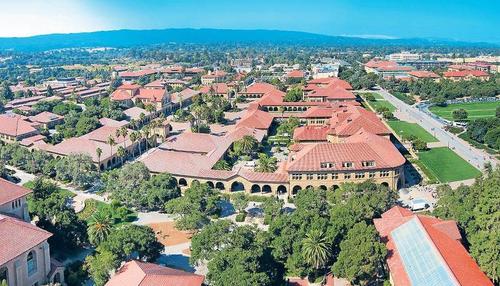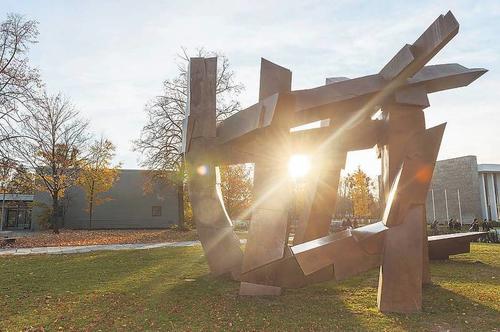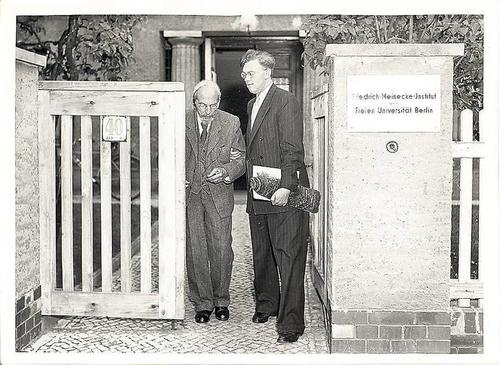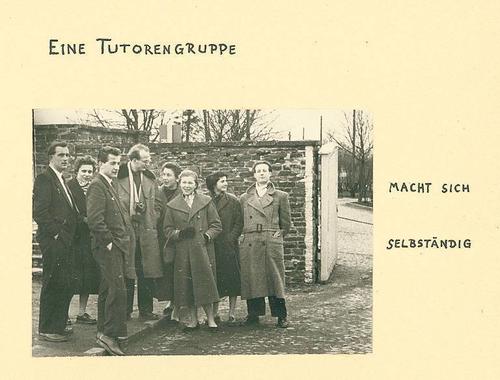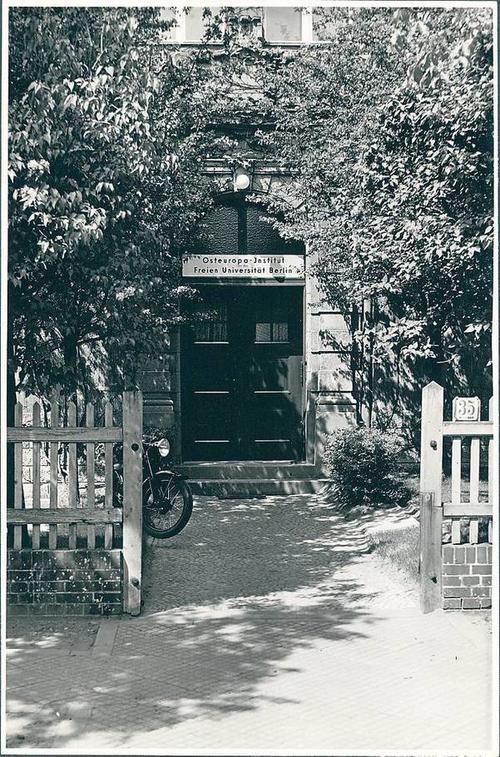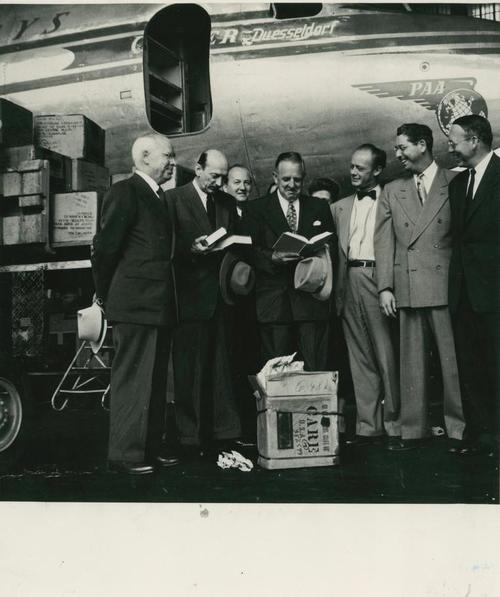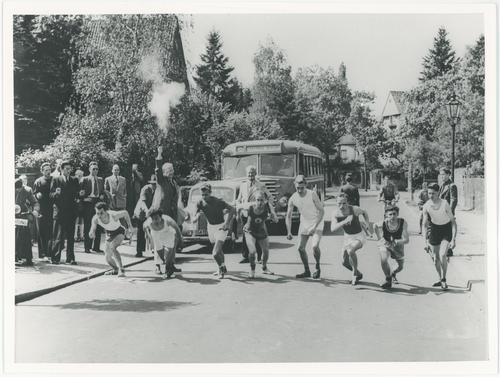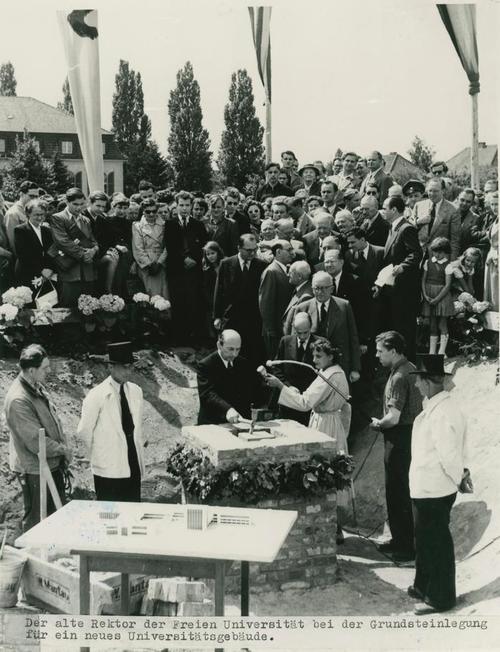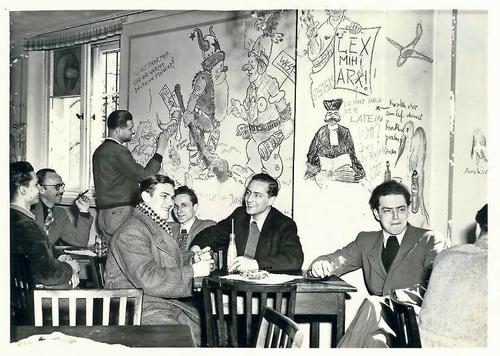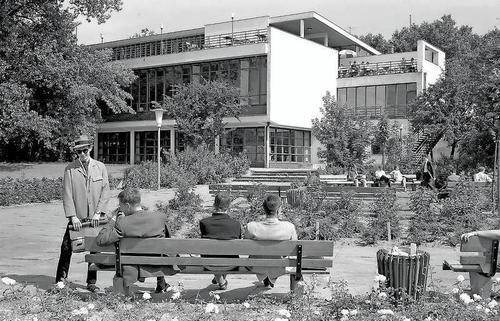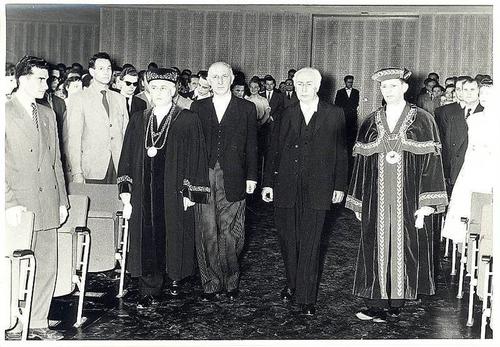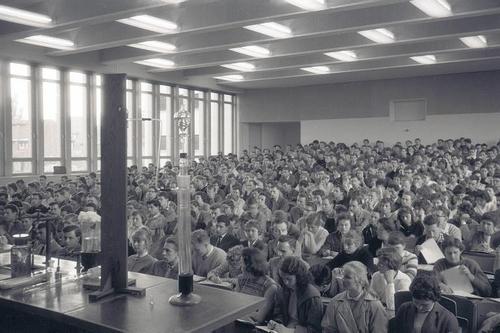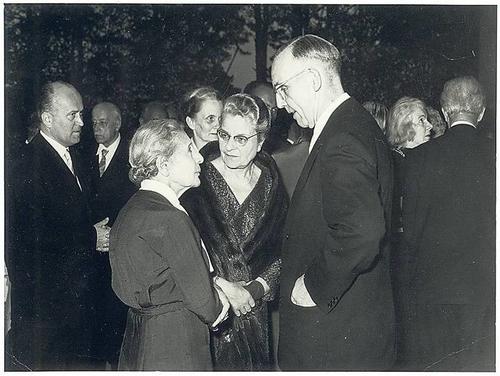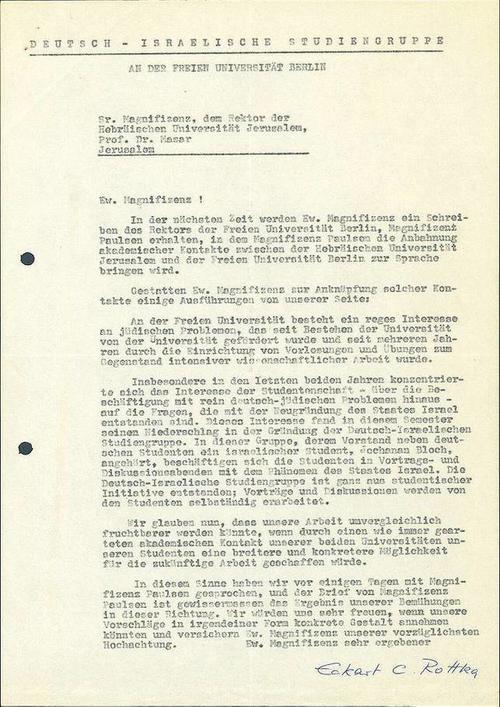The 1950s
July 1950
Money issued by the Bank deutscher Länder (BdL, Bank of German States), the first central bank for Deutsche Marks
Image Credit: Wikipedia
The Studentische Darlehenskasse Berlin-Charlottenburg e.V. (“Student Loan Fund Berlin-Charlottenburg e.V.”) was founded. Any student who could name two guarantors was entitled to receive a loan of up to DM 500, repayable in the first five years of employment after graduation.
Summer Semester in 1951
Freie Universität established its first direct exchange program for students with Stanford University in California, USA. A similar program with the University of Minnesota followed in the mid-1950s. Today, Freie Universität maintains more than 600 partnerships with universities worldwide, 40 with universities in the United States alone.
May 26, 1951
The Department of Veterinary Medicine was opened at Freie Universität.
Image Credit: Gerd-Victor Krau / Fotoarchiv der Deutschen Kinemathek
The medical school at Freie Universität opened a Department of Veterinary Medicine. Previous to this step the majority of the members of the Faculty of Veterinary Medicine at Humboldt-Universität – seven professors, 30 assistants, and 200 students – had moved to Freie Universität. They left Humboldt-Universität because they had opposed the influence of the SED party.
August 31, 51
A sculpture entitled “Perspectives” by the Berlin sculptor Volker Bartsch
Image Credit: Bernd Wannenmacher
Between 1951 and 1953, eleven students from Freie Universität and the Deutsche Hochschule für Politik (“German Academy for Politics”) were arrested, mostly in the German Democratic Republic (GDR), and murdered in the Soviet Union. Another died in a prison and labor camp. The first to be shot was a student of business administration, Kurt Helmar Neuhaus, on August 31, 1951, in Moscow. The photo shows the sculpture “Perspectives” by the Berlin sculptor Volker Bartsch, which was unveiled on the Freie Universität campus in 2007. It is dedicated to the students who were murdered in the Soviet Union in the early 1950s because of their commitment to academic and political freedom.
Fall 1951
The seminar for medieval and modern history at Dahlem’s Altenstein Strasse 40 was renamed the Friedrich Meinecke Institute in recognition of the first rector of Freie Universität. Meinecke died in 1954. Since 2001, the Friedrich Meinecke Prize has been awarded annually for an outstanding historical dissertation.
Winter Semester in 1951/1952
The photo from 1956 shows a group of tutors from the Friedrich Meinecke Institute on an excursion to Bonn.
Image Credit: Universitätsarchiv der Freien Universität Berlin
The first tutorials were set up: History students from higher semesters organized groups of up to ten participants to help first-semester students get started with their studies and provide guidance later as they continued their studies.
November 24, 1951
The Institute for East European Studies was located at Ehrenberg Strasse 35.
Image Credit: Gerd-Victor Krau / Fotoarchiv der Deutschen Kinemathek
The Institute for East European Studies was opened. At that time it was the only institute in Germany with this specialization affiliated with a university. The institute is interdisciplinary and brings together scholars from the fields of literature, history, law, geography, economics, and medicine. The photo shows the entrance of the former institute at Ehrenberg Strasse 35 in Dahlem. Today the institute is located at Gary Strasse 55.
April 20, 1952
On March 1, 1952, a university library opened in Dahlem. Before that the books were kept in various locations. On April 20, 1952, the library received a donation of 25,000 books and periodicals from American universities. The photo shows the rector of Freie Universität, Freiherr von Kress (2nd from left) and the president of the Ford Foundation, Paul G. Hoffman (3rd from left), when the books arrived at Tempelhof Airport.
May 1952
University sports played a role early on.
Image Credit: Gerd-Victor Krau / Fotoarchiv der Deutschen Kinemathek
University sports played a role early on. Here the former rector of Freie Universität Edwin Redslob (at left) fired the starter pistol to kick off a relay race with eight competing teams.
July 24, 1952
Ceremony: Laying the foundation stone for the Henry Ford Building, the central lecture hall building. Classics professor Georg Rohde, who was elected rector of the university the previous day, symbolically hammered the first nail. Construction of the building was financed by the Ford Foundation.
March 8, 1953
Die Mensa I in der Van’t-Hoff-Straße 6. Das Gebäude ist der erste Neubau der Freien Universität Berlin.
Image Credit: Reinhard Friedrich / Universitätsarchiv der Freien Universität
A new dining hall was opened at Van’t Hoff Strasse 6. It was the first in a series of new buildings for Freie Universität, whose institutes were previously housed in former Kaiser Wilhelm Society buildings and rented villas. The building was designed by the architects Hermann Fehling and Peter Pfankuch.
May 29, 1956
Joint matriculation ceremony of Freie Universität and Technische Universität in Dahlem
Image Credit: Universitätsarchiv der Freien Universität Berlin
Joint matriculation ceremony of Freie Universität and Technische Universität in Dahlem: Rectors Johannes Lorenz (Technische Universität Berlin) and Andreas Paulsen (Freie Universität) with Otto Suhr, the Governing Mayor of Berlin, and German Federal President Theodor Heuss are shown entering the Audimax together as part of the formal ceremony.
January 10, 1957
Full house: A chemistry lecture given by Karl Jahr, a professor of inorganic chemistry
Image Credit: Reinhard Friedrich / Universitäsarchiv der Freien Universität Berlin
Freie Universität was growing: Up to 1,200 students attended lectures during the winter semester of 1957/1958, 400 in a single German studies seminar alone. In January 1957, the Berlin Senate limited the number of students in Dahlem to 9,500 because the facilities were overloaded. Yet two years later, 11,005 students were enrolled at Freie Universität. This photo from 1958 shows a lecture given by Karl Jahr, a professor of inorganic chemistry.
May 11, 1957
Lise Meitner with Hans Lassen, the director of the new Physics Institute at Freie Universität.
Image Credit: Lars Lassen / Universiätsarchiv der Freien Universität Berlin
Freie Universität recognized Lise Meitner, an experimental physicist, with an honorary doctorate. The picture shows Meitner at the reception following the award ceremony in conversation with Hans Lassen, the director of the new Physics Institute. Before World War II, Meitner played a key role in the discovery of nuclear fission, which Otto Hahn and Fritz Straßmann succeeded in doing in Dahlem in 1938, a few months after Meitner fled from the National Socialists into exile in Sweden in the summer of 1938.
July 31, 1957
A letter to the president of the Hebrew University of Jerusalem.
Image Credit: Universitätsarchiv der Freien Universität Berlin
An early attempt to initiate academic contacts failed. A letter that students in a German-Israeli study group wrote in the summer of 1957, only twelve years after the end of World War II, to the president of the Hebrew University of Jerusalem was not answered for a long time. A rejection arrived in Dahlem two years later. Finally, in 1986 a partnership was established between the two universities, and in 2011 it became a strategic partnership. Today, Freie Universität’s partnership with the Hebrew University is one of the most active university collaborations that Freie Universität maintains worldwide.
Winter 1957/1958
Topping out ceremony in the Schlachtensee Student Village
Image Credit: Reinhard Friedrich / Universitätsarchiv der Freien Universität Berlin
A topping out ceremony in the Schlachtensee Student Village, which was built with the help of a donation from the United States State Department: Fritz von Bergmann, the curator of Freie Universität (today the office roughly corresponds to that of the director of administration and finance) gave the keynote. The village character was based on the pedagogical idea of the reeducation program of the American allies. Living together, working, and participating in an educational program was intended to strengthen the students’ understanding of democracy.
November 4, 1958
German Federal President Theodor Heuss, Rector Gerhard Schenck, and Governing Mayor Willy Brandt (from left to right) as they enter the academic celebration.
Image Credit: Reinhard Friedrich / Universitätsarchiv der Freien Universität Berlin
The celebrations for the tenth anniversary of Freie Universität Berlin did not take place on the official founding day, December 4th, but one month earlier to coincide with the celebration in honor of the Berlin city council’s approval of the statutes of the university. The photo shows German Federal President Theodor Heuss, Rector Gerhard Schenck, and Governing Mayor Willy Brandt (from left to right) entering the academic celebration.


